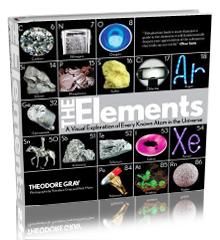Antique reagent flask | |||
| Sample Image | Spin Video | QuickTimeVR Rotation | |||
| Antique reagent flask. I got a set of five different noble gas flasks on eBay for $13.50, which seemed like a good deal even though the seller described them as "probably empty". I very much doubt, however, that they are empty: At the bottom where the flask meets the tube, there is a tiny inner breakaway seal that is completely intact on all five of them. There's no visible way for the gas to have escaped. I've learned that one normally uses a steel ball, held up with a magnet, to break the seal: When you've hooked up and flushed out all the connecting tubes, you pull away the magnet and the ball drops onto the seal, breaking it and releasing the gas. After many unworkable suggestions for proving whether the gases were still in there, several people came up with the idea of using a high voltage transformer, such as one finds in those now inexpensive plasma ball novelty lights, to try to set up an arc inside the flask, and identify the gas from the color of the discharge. Whether this is possible is sensitive to the pressure of the gas, which is not known. Fortunately, it worked beautifully on three out of the five, and proved beyond a reasonable doubt that those three at least contain the gas claimed. The others almost certainly failed because the type and pressure of gas in them does not support an arc, not because they are empty. In fact, if they were empty, I would have gotten an arc, because the arc works through up to about half an inch of ordinary air. You can see pictures of all the arcs along with a picture of the display stand I built for them (between 10PM and midnight of the evening they arrived) a using some of the same Carlson Maple used for the noble gas tiles on the table. By the way, isn't it a cute oxymoron: Reagent-grade non-reactive gas. Source: eBay seller tictoxx Contributor: Theodore Gray Acquired: 28 August, 2002 Text Updated: 29 January, 2009 Price: $3 Size: 9" Purity: 99.95% | |||
|

